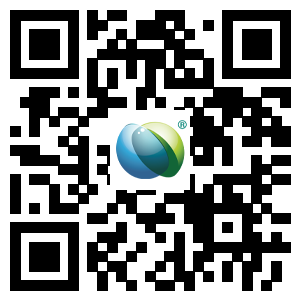Digital 3C Geophones: Revolutionizing Data Collection in Geophysics
Apr 28,2025
Digital 3C Geophones: Revolutionizing Data Collection in Geophysics
Table of Contents
1. Introduction to Digital 3C Geophones
2. What are Digital 3C Geophones?
3. Advantages of Using Digital 3C Geophones
4. Applications of Digital 3C Geophones in Geophysics
5. How Digital 3C Geophones Work
6. Comparison with Traditional Geophones
7. Future Trends in Geophysical Instrum
Digital 3C Geophones: Revolutionizing Data Collection in Geophysics
Table of Contents
- 1. Introduction to Digital 3C Geophones
- 2. What are Digital 3C Geophones?
- 3. Advantages of Using Digital 3C Geophones
- 4. Applications of Digital 3C Geophones in Geophysics
- 5. How Digital 3C Geophones Work
- 6. Comparison with Traditional Geophones
- 7. Future Trends in Geophysical Instrumentation
- 8. Frequently Asked Questions about Digital 3C Geophones
- 9. Conclusion
1. Introduction to Digital 3C Geophones
In the ever-evolving field of geophysics, the **Digital 3C Geophone** stands out as a revolutionary tool for data collection. These advanced instruments play a pivotal role in seismic exploration, offering precise measurements that enhance our understanding of subsurface structures. As we delve into the intricacies of Digital 3C Geophones, we will uncover their unique features, benefits, and applications that make them indispensable in geophysical studies.
2. What are Digital 3C Geophones?
Digital 3C Geophones, also known as three-component geophones, are specialized sensors designed to detect and record seismic waves in three dimensions: vertical, north-south, and east-west. Unlike traditional geophones that measure ground motion in only one direction, the 3C models provide a comprehensive view of seismic activity, making them invaluable for both research and commercial applications.
These geophones convert ground movement into electrical signals, which can then be analyzed for various geophysical purposes. Their digital nature allows for improved data processing, storage, and transmission, leading to enhanced efficiency in seismic surveys.
3. Advantages of Using Digital 3C Geophones
The incorporation of Digital 3C Geophones into geophysical research offers several notable advantages:
Enhanced Data Accuracy
Digital 3C Geophones significantly improve the accuracy of seismic measurements. By capturing data from multiple axes, researchers can obtain more reliable insights into subsurface formations.
Real-time Monitoring
These geophones enable real-time data collection, allowing geophysicists to monitor seismic events as they happen. This capability is crucial for applications such as earthquake monitoring and reservoir exploration.
Compact and Lightweight Design
Digital 3C Geophones are designed to be compact and lightweight, making them easy to transport and deploy in various field conditions. This portability enhances their usability across different geophysical projects.
Versatility in Applications
The versatility of Digital 3C Geophones makes them suitable for a wide range of applications, from oil and gas exploration to environmental studies and geotechnical investigations.
Improved Data Processing Capabilities
With integrated digital technology, these geophones facilitate enhanced data processing capabilities. This technological advancement allows for better signal interpretation and analysis, leading to more informed decision-making.
4. Applications of Digital 3C Geophones in Geophysics
The applications of Digital 3C Geophones are diverse and impactful:
Seismic Data Acquisition
In seismic surveys, Digital 3C Geophones are used to acquire data about subsurface geology. This information is vital for oil and gas exploration, helping companies identify potential drilling sites and assess risks.
Earthquake Monitoring
Digital 3C Geophones play a crucial role in monitoring seismic activity related to earthquakes. They provide real-time data that helps scientists analyze seismic waves and improve early warning systems.
Environmental Monitoring
These geophones are also employed in environmental studies to assess the impact of human activities on geological formations. They can detect minor ground movements caused by mining or construction, allowing for better environmental management.
Geotechnical Engineering
In geotechnical engineering, Digital 3C Geophones are used to monitor soil stability and integrity. This information is essential for designing structures that are safe and resilient to seismic events.
Research and Development
Researchers in academia and industry leverage Digital 3C Geophones for various studies, from understanding seismic wave propagation to developing new geophysical methods.
5. How Digital 3C Geophones Work
Understanding the functionality of Digital 3C Geophones is key to appreciating their role in geophysics. These devices utilize a combination of mass-spring systems and electromagnetic induction to detect ground motion.
Principle of Operation
When seismic waves travel through the ground, they cause the geophone's mass to move relative to its housing. This motion induces an electrical signal that corresponds to the amplitude and frequency of the seismic vibrations.
Data Acquisition and Processing
The acquired signals are digitally processed, allowing for accurate transformation into useful seismic data. Advanced algorithms enhance signal clarity, filtering out noise and improving data quality for analysis.
Integration with Other Technologies
Digital 3C Geophones can be integrated with other geophysical tools, such as GPS and remote sensing instruments. This integration allows for comprehensive geophysical surveys that combine multiple sources of data for deeper insights.
6. Comparison with Traditional Geophones
While traditional geophones have served the geophysical community for decades, Digital 3C Geophones present several distinct advantages:
Measurement Capabilities
Traditional geophones typically measure ground motion in a single direction, limiting the scope of available data. In contrast, Digital 3C Geophones capture motion across three orthogonal axes, providing a more complete picture of seismic activity.
Data Quality
Digital 3C Geophones offer superior data quality due to advanced signal processing capabilities. Traditional geophones may struggle with noise interference, while digital models can effectively filter and enhance the signals for clearer analysis.
Operational Efficiency
The ease of deployment and real-time data transmission associated with Digital 3C Geophones increases operational efficiency. Traditional geophones often require more extensive setup and manual data handling, slowing down research processes.
7. Future Trends in Geophysical Instrumentation
As technology continues to advance, the future of geophysical instrumentation looks promising. Here are some anticipated trends in the field:
Increased Automation
Future developments in Digital 3C Geophones may include increased automation for data collection and analysis. Automated systems could streamline workflows and improve the rapidity of data acquisition in seismic surveys.
Integration with AI and Machine Learning
The incorporation of artificial intelligence and machine learning algorithms could enhance data interpretation. These technologies can help identify patterns and anomalies in seismic data, leading to more accurate predictions and analyses.
Miniaturization and Portability
As demand for portable geophysical tools grows, we can expect further miniaturization of Digital 3C Geophones. Smaller, lightweight models will enhance fieldwork flexibility, enabling researchers to deploy them in previously inaccessible locations.
Enhanced Connectivity
Future Digital 3C Geophones may feature improved connectivity options, enabling seamless integration with cloud computing and IoT platforms. This advancement would facilitate real-time data sharing and collaboration among researchers worldwide.
8. Frequently Asked Questions about Digital 3C Geophones
What is the primary function of Digital 3C Geophones?
Digital 3C Geophones are designed to detect and measure ground motion in three dimensions, providing detailed seismic data for geophysical research and applications.
How do Digital 3C Geophones differ from traditional geophones?
Unlike traditional geophones that measure motion in only one direction, Digital 3C Geophones capture movement in three orthogonal axes, offering a comprehensive view of seismic activity.
What are the main advantages of using Digital 3C Geophones?
The main advantages include enhanced accuracy, real-time monitoring capabilities, portability, versatility in applications, and improved data processing capabilities.
In which fields are Digital 3C Geophones primarily used?
Digital 3C Geophones are primarily used in seismic data acquisition, earthquake monitoring, environmental studies, geotechnical engineering, and research and development.
How do Digital 3C Geophones process seismic data?
These geophones convert ground movement into electrical signals, which are then digitally processed to enhance clarity and improve data interpretation for analysis.
9. Conclusion
Digital 3C Geophones are at the forefront of transforming data collection in geophysics, offering unprecedented accuracy and versatility. As we continue to harness the power of these advanced instruments, we enhance our understanding of the Earth's subsurface and pioneer innovative solutions in various fields. The future of geophysical instrumentation is bright, with Digital 3C Geophones leading the way toward more efficient, accurate, and insightful research endeavors. As we embrace these advancements, the potential for discoveries in geology, earthquake monitoring, and environmental science expands, paving the way for a deeper understanding of our planet.
BLOG
CONTACT
Tel: 0086-0551-65327898 / 65327899
Fax: 0086-0551-65327899
E-mail: hfgwe@hfgwe.com
Add: 9th Floor, Building A, G3, Phase II, Innovation Industry Park,No. 2800 Innovation Avenue, High-tech Zone, Hefei city,Anhui Province, China

Mobile website
Hefei Guowei Electronics Co., Ltd.
Subscribe Us
We will contact you within one working day. Please pay attention to your email.
CopyRight:Hefei Guowei Electronics Co., Ltd. Powered by 300.cn SEO






